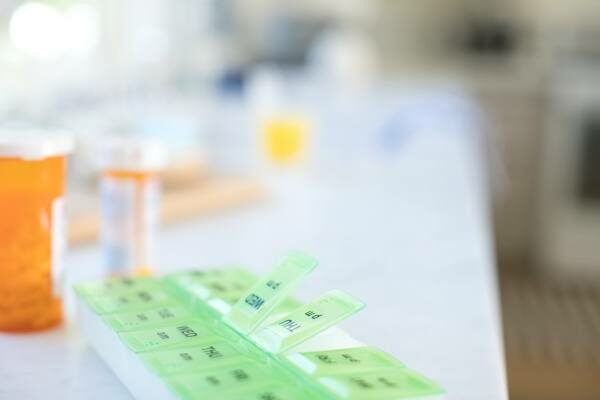
When it comes to first aid in the home, be prepared with a well-stocked medicine cabinet. If you need to treat an illness or injury, you will have all the common medications and first aid supplies on hand to help yourself or others.
Before you head to the drugstore, take an inventory of your medicine cabinet and what’s currently on your shelves. This is a good opportunity to clear your medicine cabinet of old prescriptions and expired medications. Make this a habit and try to do this every three months. Find a local center near you that can properly dispose of old medication. Some grocery stores or community centers offer this service annually. By doing this, you won’t have to worry about how long that bottle of pink liquid has been sitting on your shelf the next time you have a sudden stomach ache.
Remember: Always follow dosage instructions as indicated on medication packaging.
10 common medicines and first aid supplies to have at home
The following medicine cabinet supplies can treat a range of illnesses and minor injuries, from allergies and stomach aches to cut, bruises, aches and pains.
1. Have a list of emergency instructions
Tape a list of emergency phone numbers (doctors, Poison Control), medication instructions and allergy remedies inside the cabinet door.
2. Acetaminophen and an NSAID
Acetaminophen is a pain reliever and fever reducer. Non-steroidal anti-inflammatory drugs (NSAIDs) can reduce inflammation related to conditions like backaches and toothaches. Be aware of NSAID sensitivity in your family, especially in young children.
3. Aspirin
Aspirin works as a pain reliever for adults, but it’s also important to have on hand in case of emergencies. According to the American Heart Association, taking aspirin also helps during a heart attack. In fact, people having a heart attack are often given an aspirin by emergency medical services. However, it’s wise to be aware of aspirin sensitivity in your family, and it should never be given to children under 18.
4. Antihistamine
Antihistamines treat hives, itching and allergic reactions from a wide range of causes. Stock both oral antihistamines (the liquid or pill form that may be helpful during a serious allergic reaction) and hydrocortisone cream.
5. Decongestant, cough suppressant and flu relief medicine
You won’t want to leave home to go to the drugstore when you’re feeling lousy, so keep cold and flu relief medication on hand.
6. Antacids
If you are suffering from heartburn, these are your best bet for quick relief.
7. Antibiotic ointment
Apply this after you’ve washed cuts and scrapes with warm water and soap, then cover the wound with clean bandages.
8. Bandages
Stock up on adhesive bandages of all sizes, plus plenty of gauze and sterile tape.
9. Thermometer
Feeling someone’s forehead may be a good first step, but a thermometer is necessary for an accurate temperature reading.
10. Heat and ice packs
Keep several of these on hand, as they can provide relief for everything from headaches and sprains to injuries and sore muscles.
Staying healthy and safe is everyone’s concern. But if someone gets injured on your property, you’ll need more protection than what’s available in your medicine cabinet. Make sure you’re covered with personal umbrella insurance coverage from Nationwide, which may help protect you beyond your homeowners insurance coverage limits.



